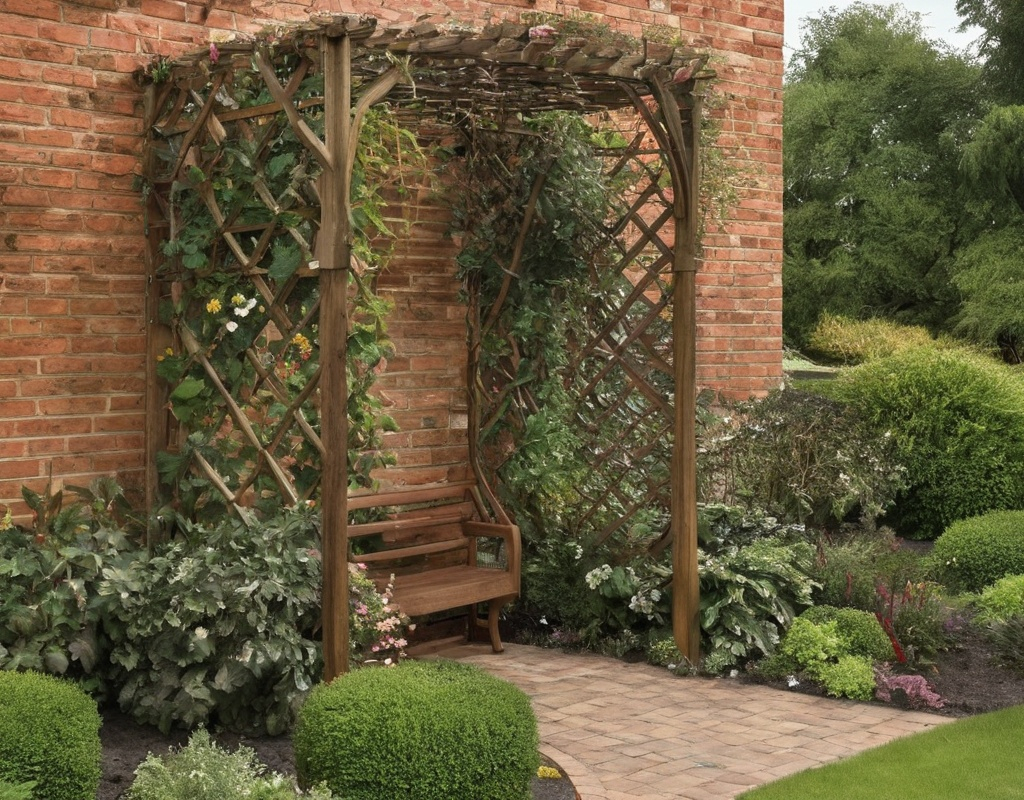There’s something magical about a vine wrapping itself around a trellis like it’s got somewhere to be. A garden without at least one trellis? That’s like tea without a biscuit. Sure, it works. But oh, how much better it could be.
Trellises aren’t just for keeping your roses off the ground. They’re character builders. They tell stories. They invite things to climb, reach, stretch. That’s poetry in wood, metal, wire—heck, even repurposed junk.
If you’ve got climbing plants with nowhere to climb, it’s basically a crime against nature.
Let’s talk trellises. Let’s talk style. Not just what you’ve seen before. We’re diving deep into the kind of garden ideas that’ll make your neighbors lean over the fence and go, “Whoa.”
1. The Crisscross Classic
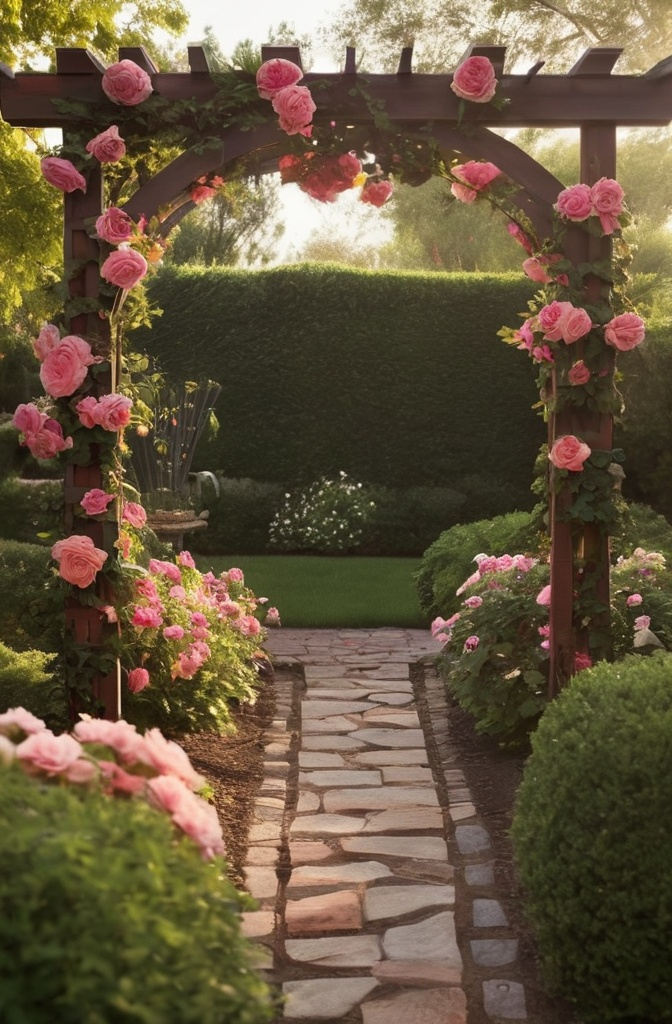
Sometimes, simple hits different. A wooden lattice in a tight crisscross pattern gives major cottage-core vibes. Especially when painted soft white and half-covered in clematis—it’s the dreamiest wall ever to wear leaves.
Honestly, this one feels like it should come with a scone and a cup of something floral.
2. The Repurposed Ladder
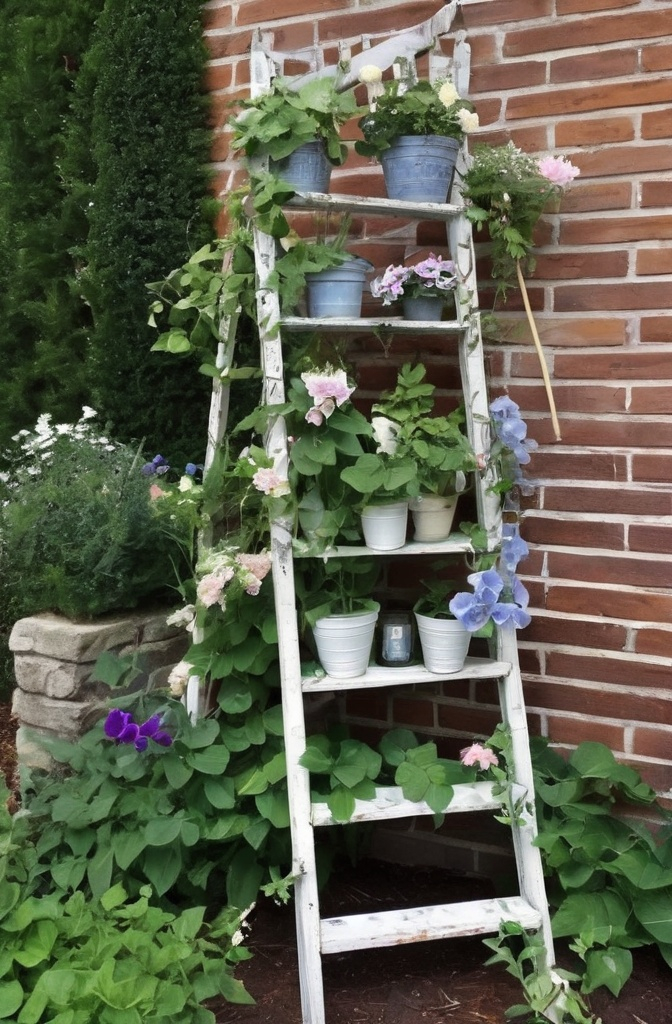
Old ladders: the unsung heroes of garden design. Stand one up against a shed or prop it freestanding. Boom. Trellis.
Paint it funky, or let the weather do its thing. Beans, morning glory, or even a wild grapevine will happily climb like they’re chasing the clouds.
3. Wire Against the Wall
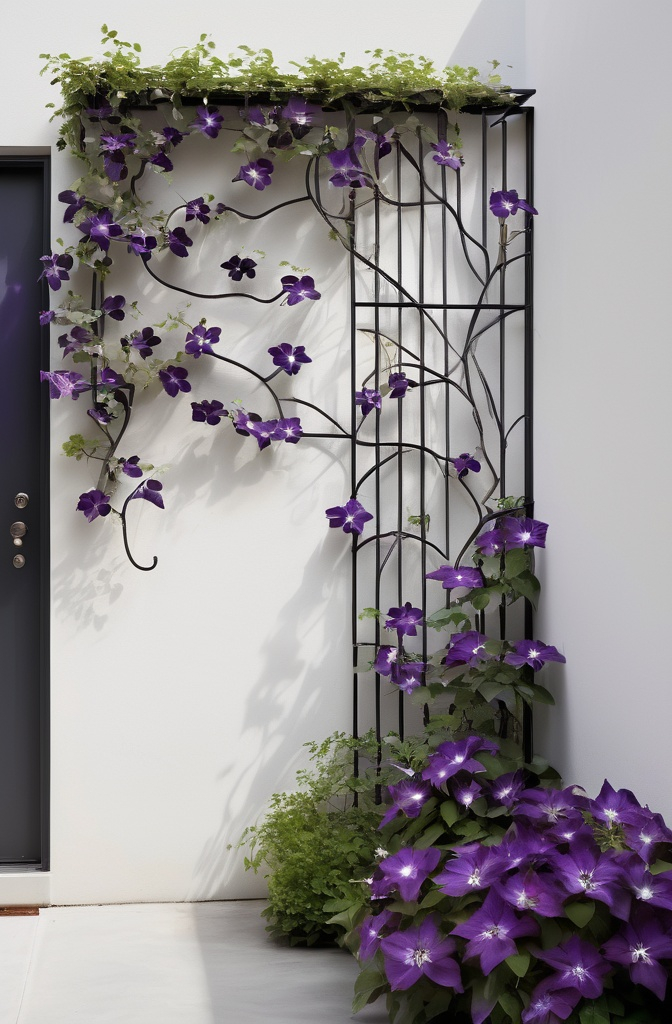
Not every trellis has to be a standalone showstopper. Some are low-key brilliant.
Stretch wire or cable horizontally across a brick or plaster wall. Add anchor points, keep it taut. Instant modern vibe. Let the plants do the talking—they’ll fill in the blanks.
It’s like handwriting, but with leaves.
4. The Archway Entrance
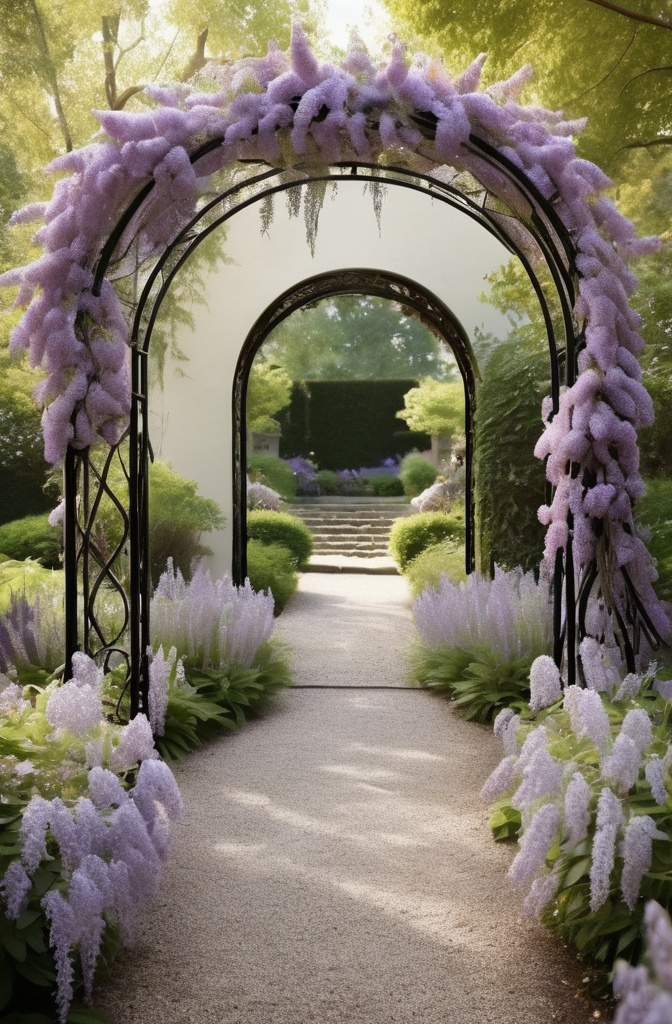
Garden gates are cute. Archways? Whole different game.
Cover a curved metal arch with climbing roses, and you’ve basically created the portal to Narnia. Or a Jane Austen novel. Either way, you win.
Let it get a little overgrown. Romance loves a bit of chaos.
5. Bamboo Minimalism
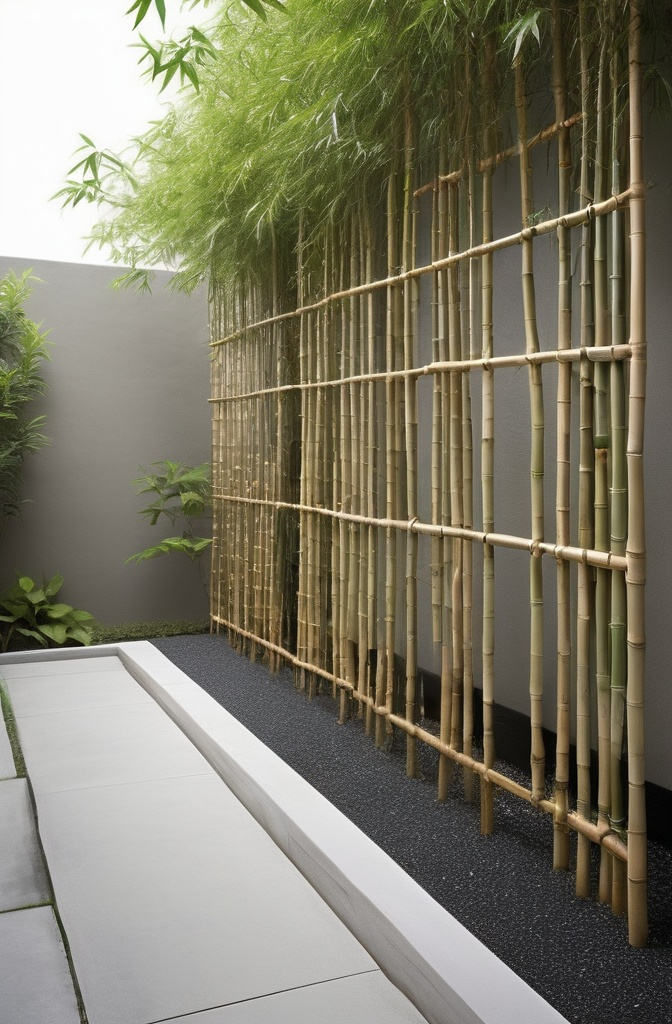
Bamboo is like that friend who looks effortless but somehow pulls off everything. It’s lightweight, sustainable, and hella chill.
Tie a few poles together with natural twine and make a grid or a fan shape. The irregular look feels handcrafted and humble. Peas adore this.
Also: bamboo weathers beautifully, gets a soft patina. Looks better every year.
6. The Copper Pipe Grid
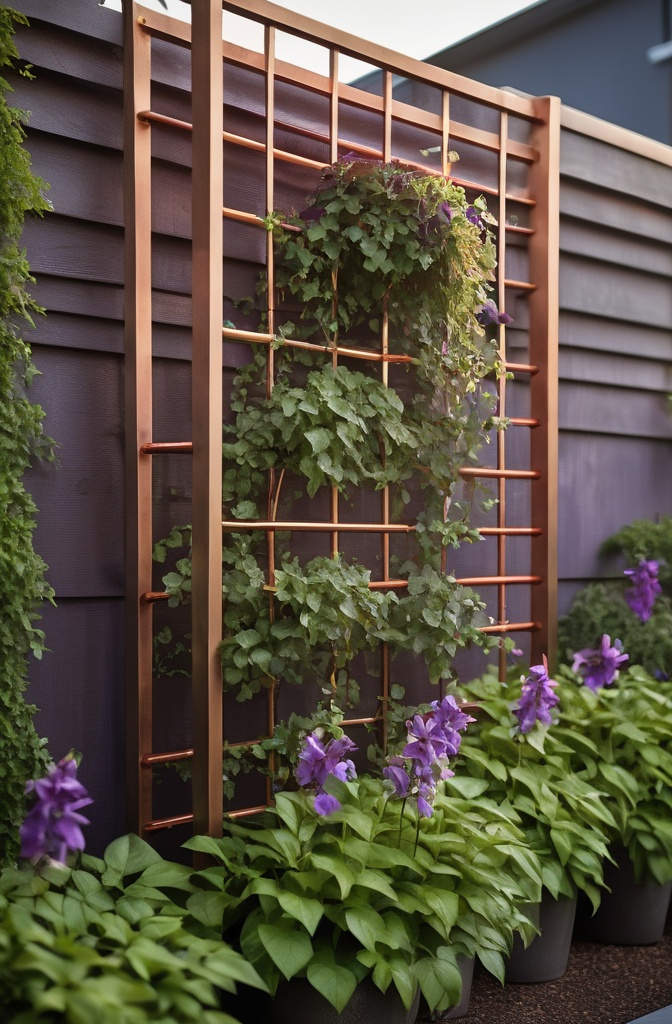
If you want your trellis to age like fine wine, go copper.
It starts shiny—like, sunglasses-required shiny. But give it a season, and it deepens into this weathered, dusky brown-green. Unreal with purple blooms.
It’s the kinda look you’d see in a luxury outdoor magazine and think, “Oh no, that’s too fancy for me.” But nah. You got this.
7. The Salvaged Window Frame
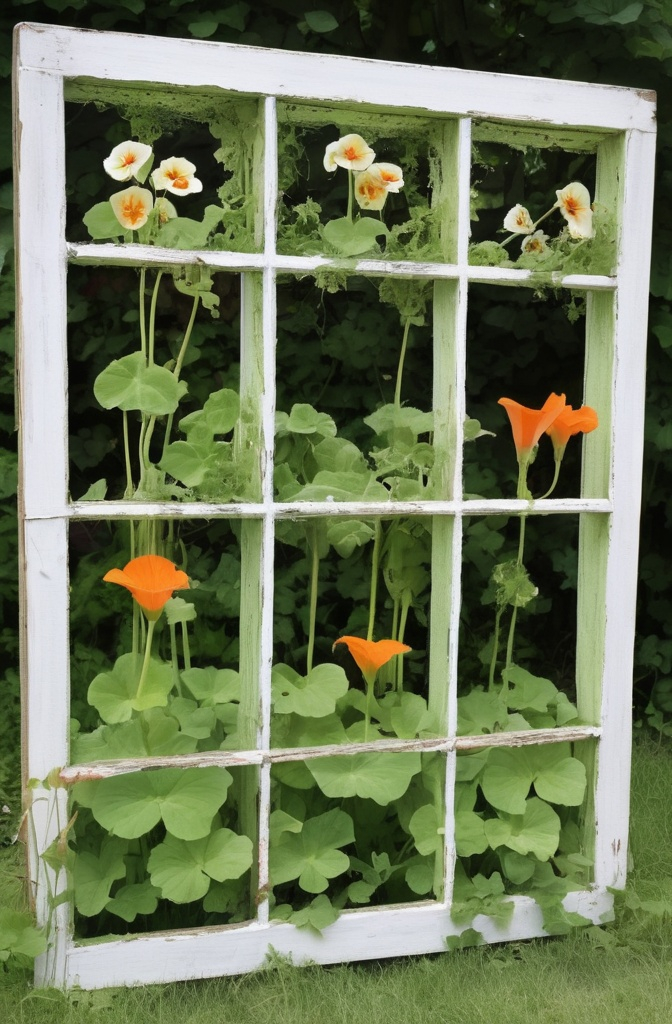
Nothing screams charm like an old window turned trellis.
Leave the glass out. Let the empty panes frame vines like little living portraits. Hang it against a fence or suspend it in the air with chains if you’re feeling bold.
Wisteria looks insane on this. Truly next level.
8. Obelisk Style
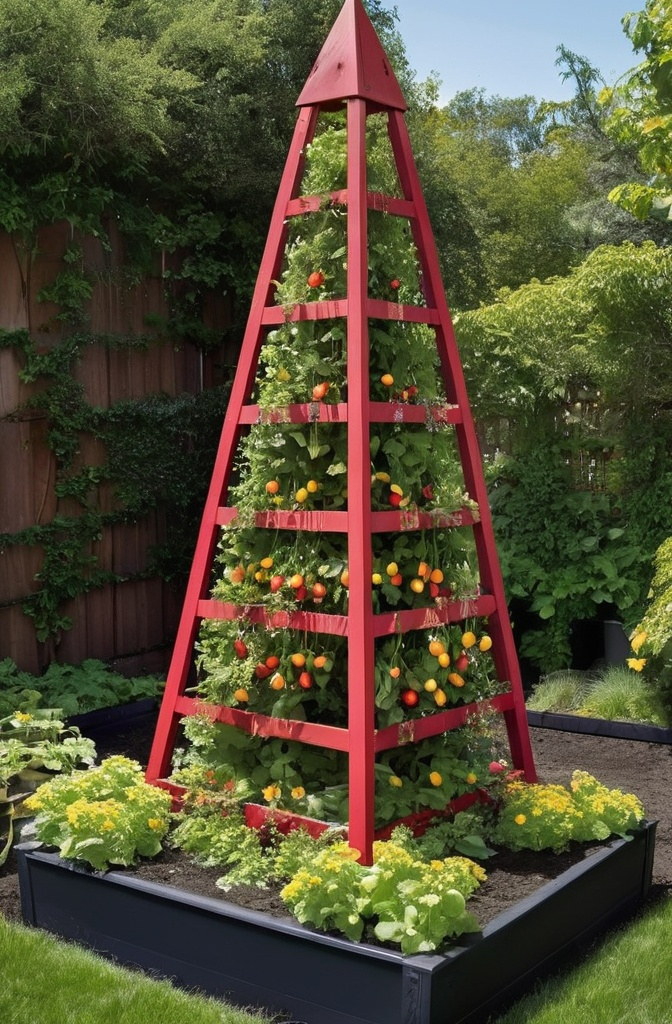
Tall. Pointy. Regal. Obelisk trellises are the garden equivalent of a top hat.
Build one with wooden stakes, or buy a wrought iron version if you’re fancy. Plant something twisty at the base—sweet peas or black-eyed susans—and watch them spiral like nature’s own soft-serve.
This one adds vertical drama. Your garden deserves a little theatre.
9. The Fence Conversion
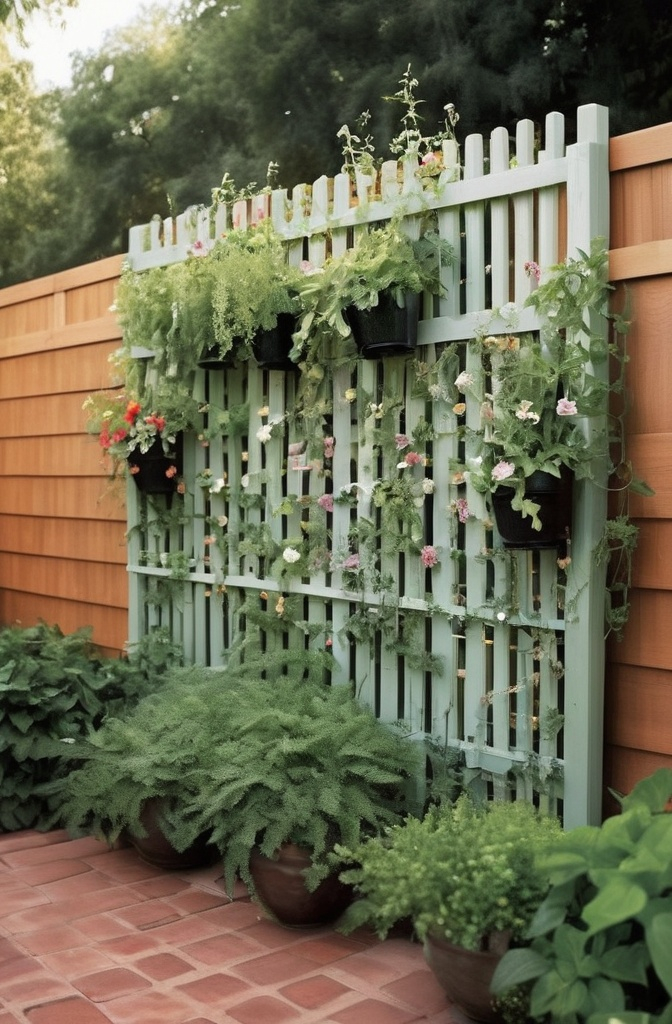
Already got a fence? Perfect. Now make it climbable.
Staple trellis panels onto it or train wires in geometric patterns. Suddenly your boring fence is a living mural.
Extra points if you let jasmine loose on it. Come summer evenings, the scent will knock your socks off.
10. The Rebar Frame
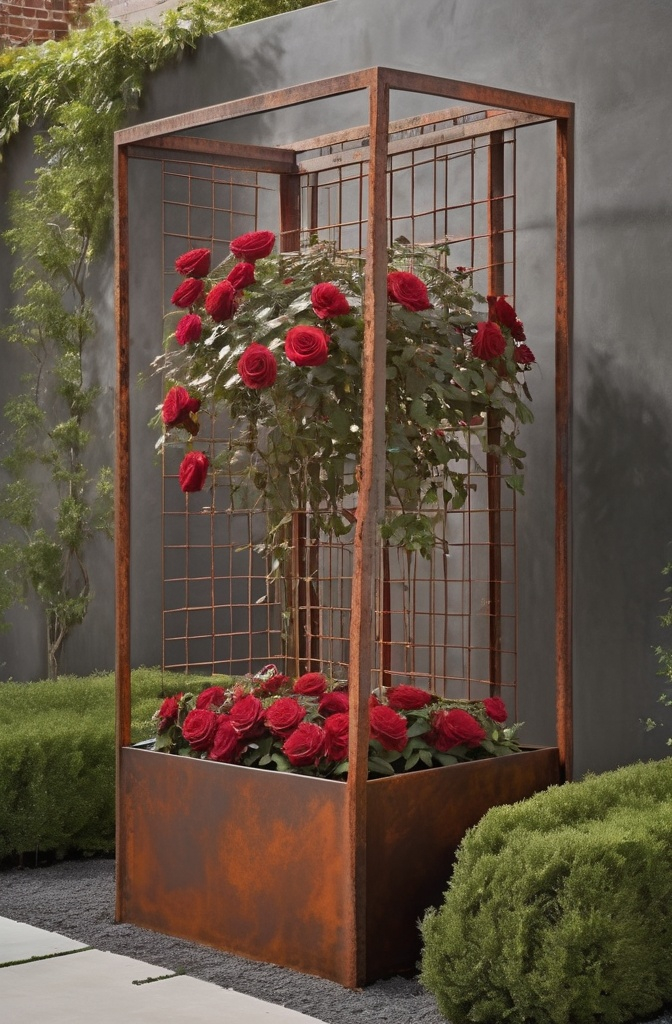
Industrial vibes, but make it garden. Rebar is cheap, strong, and not trying to be pretty—until it is.
Weld or tie it into a tall rectangular frame. Let it rust. Throw some passionflower on it. Boom. Sexy apocalypse garden aesthetic.
It shouldn’t work. But it does.
11. The Freestanding Screen
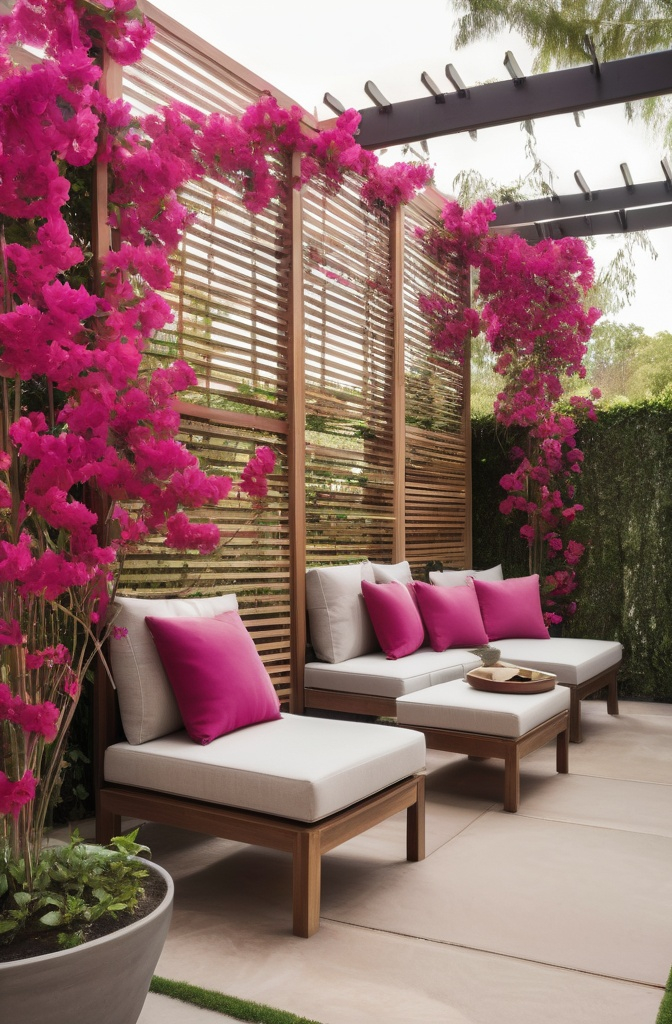
Privacy? Style? Vine support? Yes, yes, and yes.
Build or buy a panel screen, either wood or metal. Plant something dramatic—like scarlet runner beans or thunbergia. This becomes the backdrop to your outdoor furniture, a sort of green wallpaper that breathes.
Sometimes it even waves in the wind like it’s flirting with you.
12. Twigs and Twine DIY
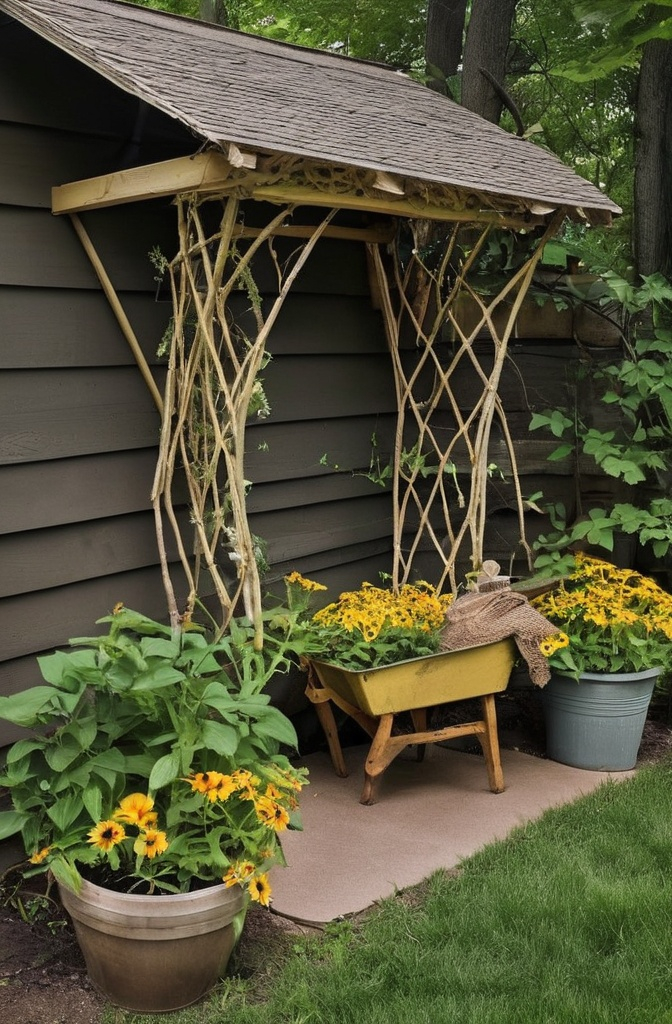
Budget trellis? No problem. Head into the woods, grab a bundle of fallen twigs.
Tie them together with rough twine, lean it against a wall or teepee it. That’s it. That’s the tweet.
Raw, rustic, wildly charming. And biodegradable. Earth loves it.
13. The Triangle Wall Leaner
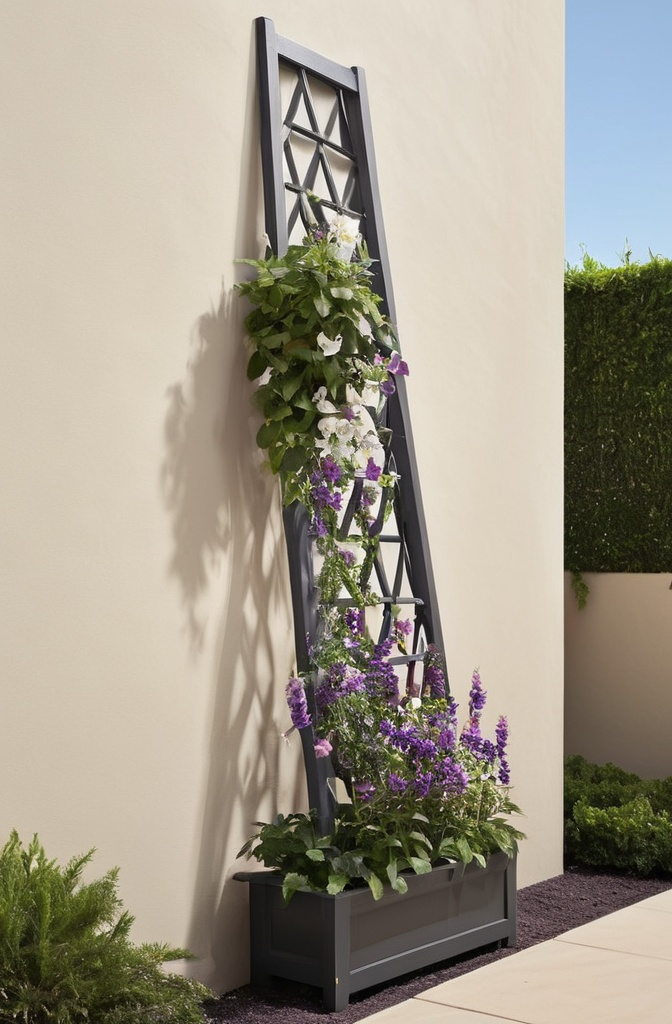
You know those trellises that lean like they just woke up late? They’re a vibe.
A wide-bottom, narrow-top triangle leaning on a wall is perfect for wild tomatoes, cucumbers, or the chaotic-good nasturtium. It’s giving lazy structure—which is kind of genius.
Best part? Easy to move. Easy to store. Easy to love.
14. Chainlink Glow-Up
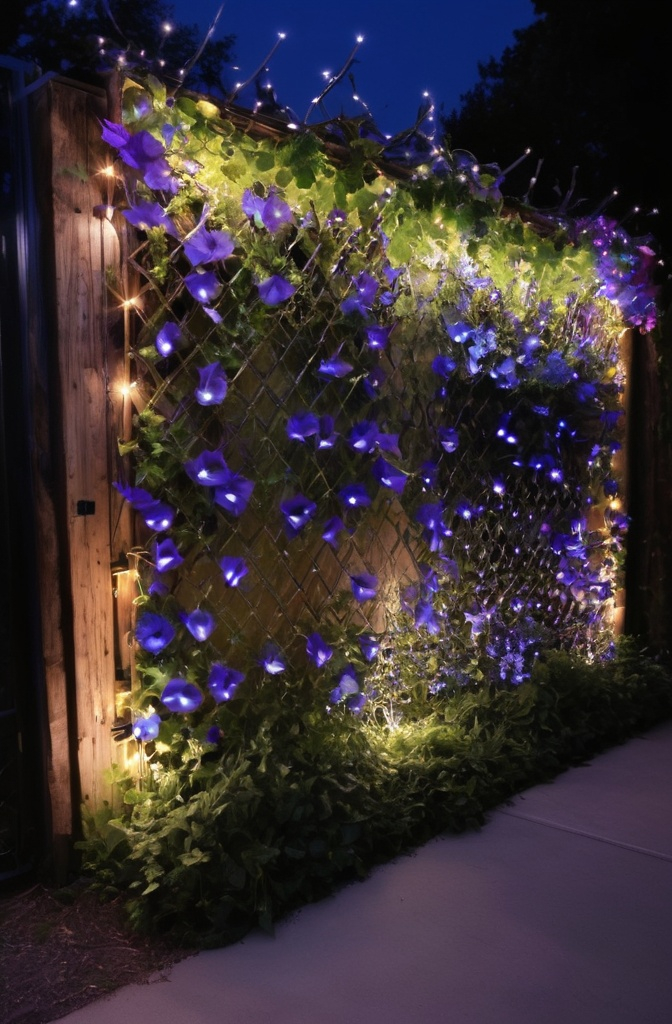
Chainlink fences usually scream “schoolyard.” But not anymore.
Train ivy, hops, or sweet potato vine along it, and you’ve got a living tapestry. It softens the metal harshness and adds texture. If you squint, it’s kinda poetic.
A coat of matte black spray paint underneath can totally elevate the whole thing.
15. The Pergola Hybrid
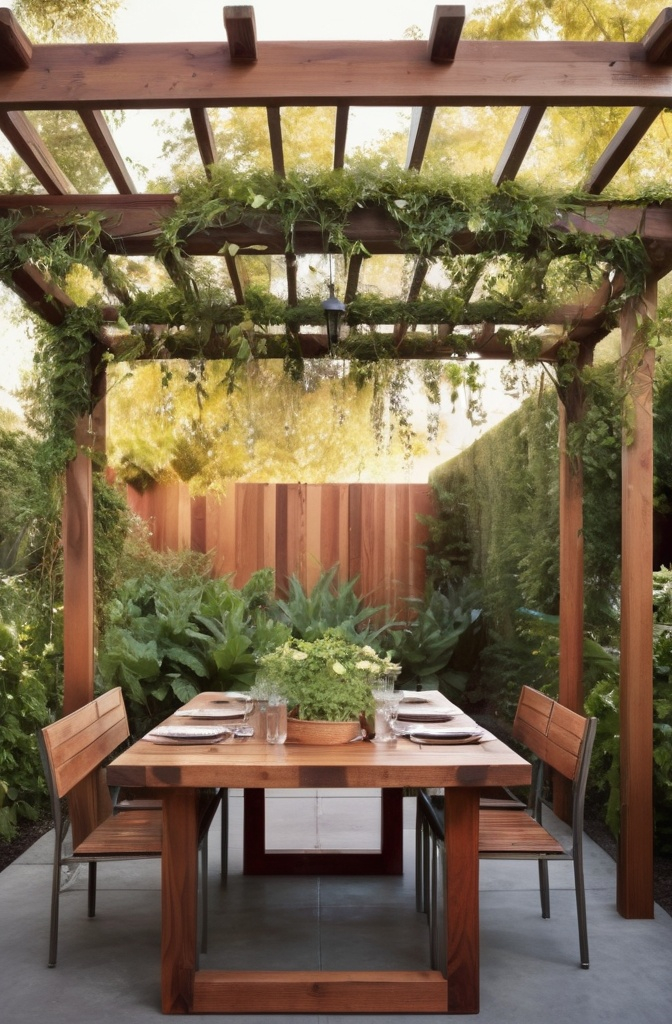
Why stop at a wall trellis when you can go overhead?
Install a mini pergola—just a couple of posts and crossbeams—and plant something with ambitions. Wisteria, again, is the drama queen of this setup.
Sit under it in the rain and feel things.
16. The Macramé Plant Ladder
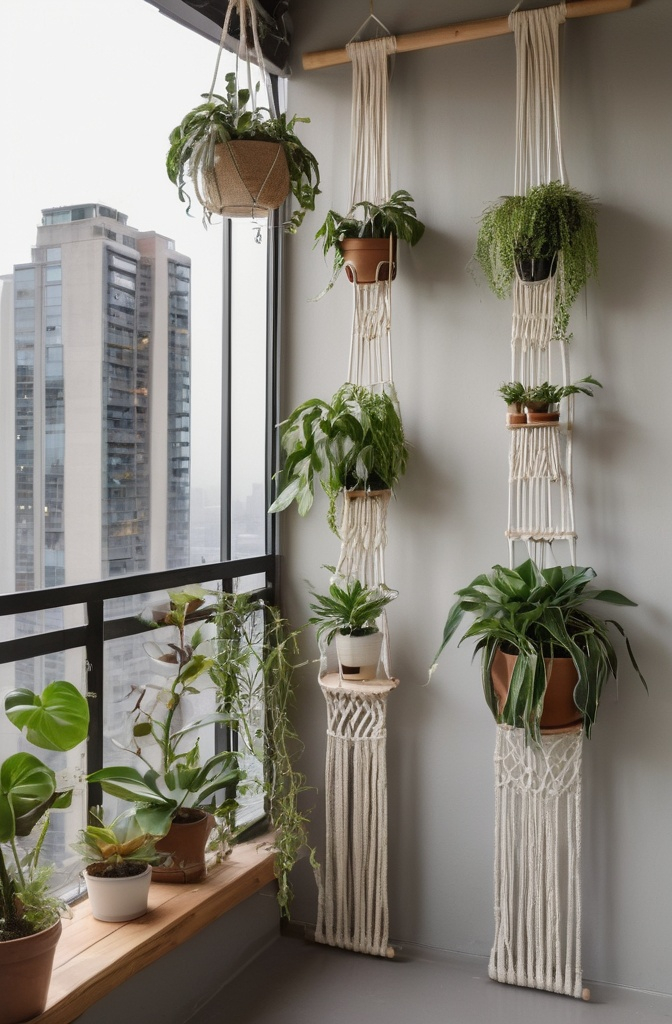
Trellis but make it boho.
Macramé cords knotted into a hanging ladder can support lightweight climbers like string-of-hearts or pothos if it’s indoor-outdoor. Hang it off a pergola or tree branch. It sways. It’s alive.
Also doubles as a conversation starter for garden parties.
17. The Pallet Wall
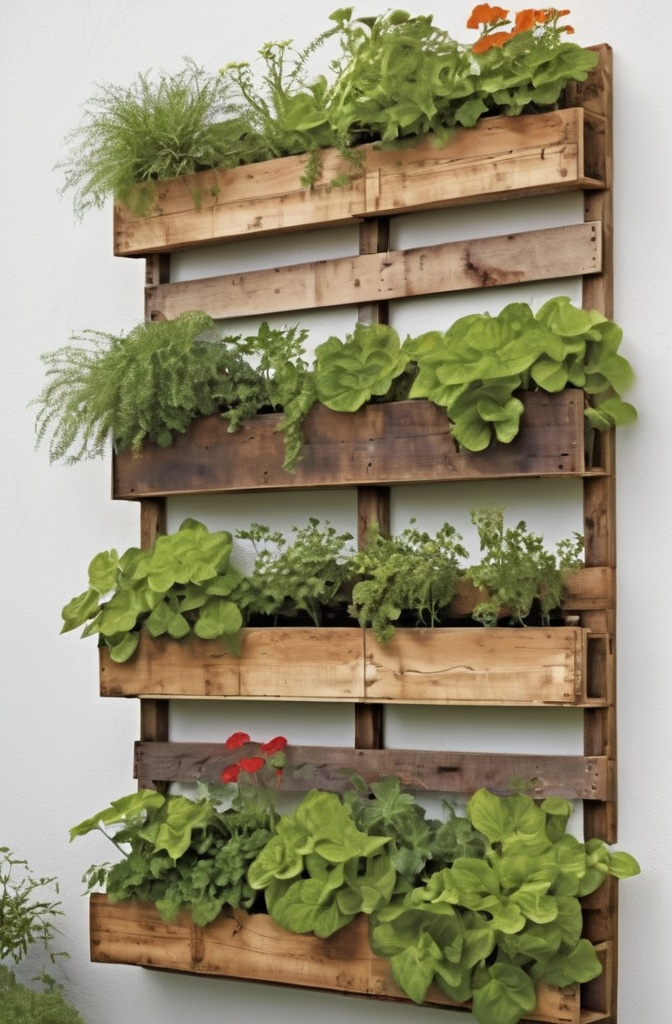
Got pallets? Cool. Stand them upright. Strip a few boards for airflow. You’ve got yourself a rustic trellis-slash-garden-wall.
Great for veggies. Great for climbing strawberries. Great for pretending you’re on a Pinterest board.
Paint it bold or let it stay scrappy. Both work.
18. The Spiral Column
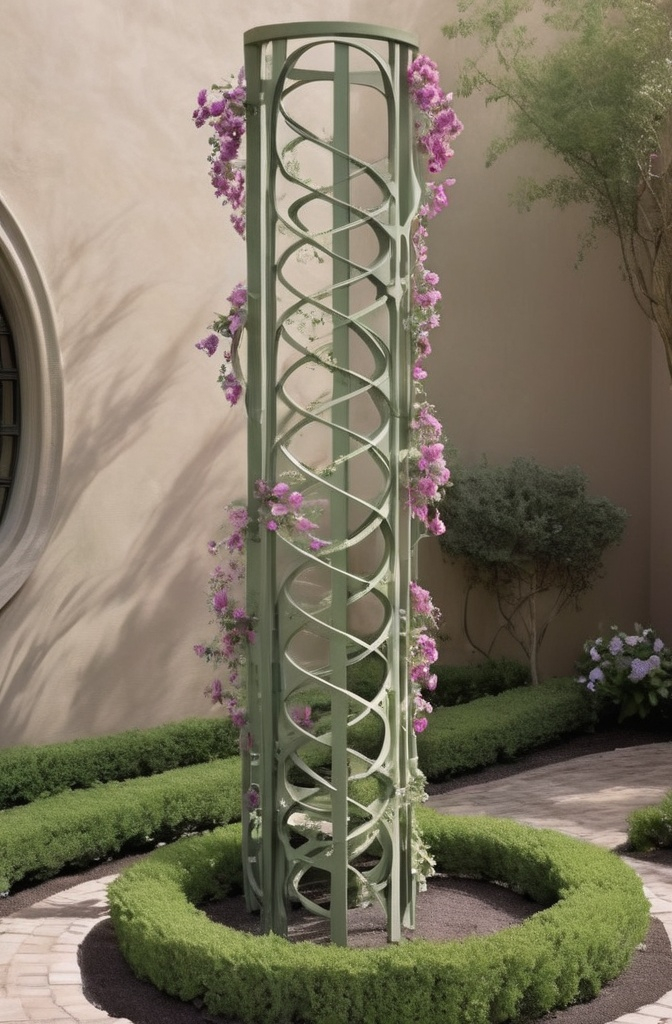
This one’s wild. Imagine a tall, vertical post with spiral wire or twine climbing it round and round like a candy cane.
Plants follow the spiral, naturally. Cucumbers love this. It’s space-efficient, looks weird (in the best way), and has a futuristic treehouse energy.
Also, it’s mesmerizing to watch it grow.
19. The Hanging Frame Trellis
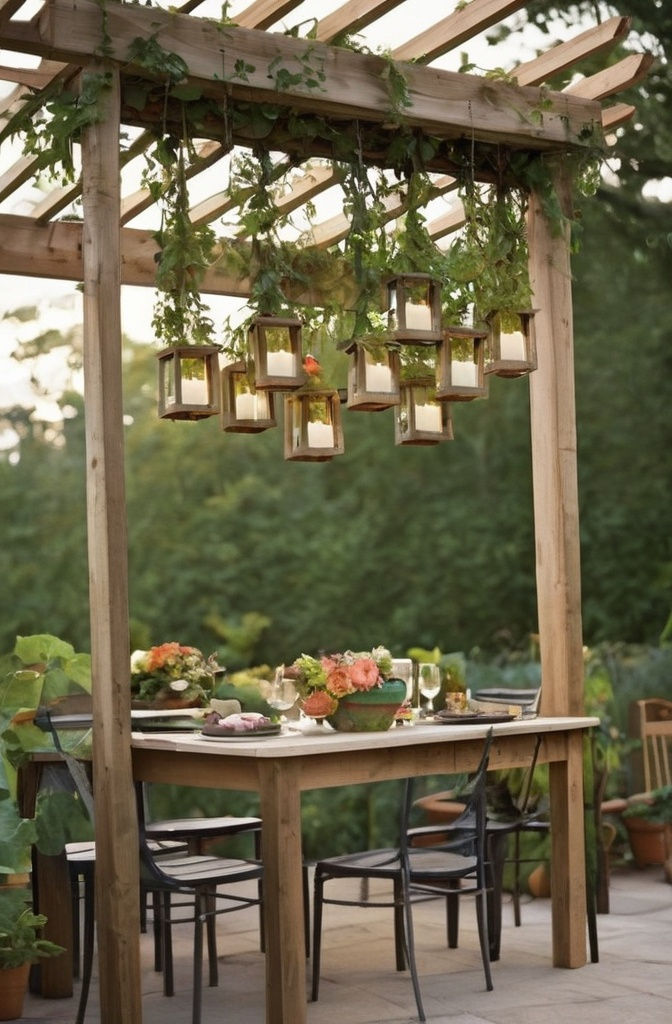
Suspend a square or rectangular frame horizontally like a ceiling over your patio.
Train climbers to dangle down through it—like a leafy chandelier. Morning glories, peas, even miniature gourds.
There’s something about blooms hanging above your head that makes everything feel cinematic.
20. The Living Curtain

Think rows of twine or string hung vertically from a beam or wire. Plant fast growers below—maybe hyacinth beans or canary creeper.
Soon you’ll have a soft green curtain swaying in the breeze. Light filters through the leaves. It’s ridiculous how pretty it is.
You won’t want to go inside. Ever again.
Conclusion
A good trellis isn’t just functional. It’s a frame for nature’s slowest art. You’re not just growing a plant—you’re making sculpture.
Even the jankiest DIY setup can look like a masterpiece once nature’s done her thing. A tomato vine doesn’t care if your structure’s symmetrical. A sweet pea won’t judge a few wobbly nails.
The key? Let it be a little wild. Let it surprise you.
Mix materials. Break rules. Let your garden tell stories in lines and spirals and blooming whispers. A trellis is just the beginning.
And once those climbers start stretching skyward like they’ve got a date with the stars—yeah. That’s when the real magic begins.
So go on. Build one. Build ten. Let your garden grow tall.
FAQs
What is the main purpose of a garden trellis?
A garden trellis gives climbing plants something to hold onto as they grow upward. It also adds structure, height, and visual interest to your garden. Basically, it’s like giving your plants a ladder to the sky.
Can I build a trellis myself?
Absolutely, yes. Many trellis ideas in the article—like twig frames, ladder trellises, or pallet walls—are perfect for DIY lovers. You don’t need fancy tools. Just creativity, some string or nails, and a bit of “let’s see what happens.”
What types of plants are best for trellises?
Climbing or vining plants are the obvious go-tos. Think clematis, morning glory, sweet peas, ivy, jasmine, beans, tomatoes, wisteria, and passionflower. If it twists, twines, or grabs—it’s probably a trellis fan.
Which trellis design is best for a small garden?
Try the freestanding screen or spiral column. They’re both space-efficient and stylish. Wall-mounted wire designs also work wonders if you’re low on space but want a vertical green moment.
How do I secure a trellis to a wall or fence?
Use garden hooks, masonry screws, or strong brackets depending on your surface. For wire trellises, tension is key—keep lines tight with turnbuckles or anchors. Just don’t skimp on the fixings or your vines might pull the whole thing down mid-season. Embarrassing.
What materials can I use for a trellis?
Wood, bamboo, metal, wire, rebar, old ladders, salvaged window frames, pallets—you name it. As long as it can hold the weight of your chosen plant, it’s fair game. Bonus points if it weathers well.
Do trellises need maintenance?
Kinda. Wooden ones may need sealing or painting once in a while. Metal might rust—though that’s a vibe, honestly. And you’ll want to check that the structure isn’t being overwhelmed or pulled down by vigorous growers. Think of it as plant parenting.
Can a trellis add privacy to my garden?
Yep. A living wall or freestanding screen trellis covered in dense vines can act like a leafy little privacy curtain. Perfect for patios, balconies, or hiding ugly fences.
How do I train plants to climb a trellis?
Just gently tie the stems with soft twine or garden clips and guide them toward the support. Some climbers (like peas or beans) do it all on their own. Others (looking at you, roses) need a little encouragement.
Is it okay to let the trellis get overgrown?
Honestly? That’s when it gets good. A bit of wildness makes a garden feel alive. Just make sure the structure can handle the weight, and trim things back now and then so light and air still get through.
What if I want my trellis to be decorative even without plants?
Then go wild with design. Try copper pipes, painted wood, macramé, or geometric metal. A good-looking trellis is a sculpture on its own. The plants just make it better.
Are trellises seasonal or year-round?
Depends on the plants. Some vines die back in winter, others keep going. But a solid trellis will hold up all year long. And in the off-season? It still looks pretty great with frost clinging to it. Kind of moody. Kind of beautiful.
Can I mix different plants on one trellis?
Definitely. Just be sure they grow at a similar pace or one will bully the other. Mixing colors, textures, or bloom times can make your trellis look like a living collage.
What’s the easiest trellis for beginners?
Start with a bamboo teepee or a wall wire grid. Both are low-fuss, affordable, and super satisfying once the green takes over. You don’t need to be a pro. Just a bit curious.
Do trellises work indoors or on balconies?
Yes! Mini trellises are great for potted climbers. Macramé ladders or metal grids can live happily on a sunny wall inside or outside. Perfect for renters or small space plant lovers.
How tall should a trellis be?
Depends on the plant. Some need just 3–4 feet, others (like wisteria or grapevine) want to hit the roof. But even a 2-foot structure adds charm and texture.
Can I move my trellis once plants are growing?
Short answer: nope, not without a lot of heartbreak. Once a plant starts climbing, moving its home is like pulling a rug out from under it. Set it up where you want it to stay.
Will a trellis increase my garden’s curb appeal?
100%. A beautifully trellised plant says, “Someone loves this space.” It draws the eye up, adds color, texture, and that little something-something people can’t stop looking at.
Are there low-maintenance trellis options?
Yes—metal, treated wood, or plastic trellises need almost no upkeep. Pair them with low-effort climbers like ivy or star jasmine and boom, lazy gardener’s paradise.
How many trellises is too many?
That’s like asking how many good hair days you want in a month. If your garden can hold it, go wild. Just make sure each one has a purpose and a plant pal to climb it.
Got more trellis questions? Ask away—there’s no such thing as too much vertical garden magic.

Emma is a passionate home decor enthusiast and the voice behind Home Evoke. With a keen eye for design and a love for transforming spaces, she shares her expertise and creative ideas to help others create beautiful, functional homes. Through her blog, Emma inspires readers with practical tips, trend insights, and DIY projects that make home styling effortless and enjoyable.

